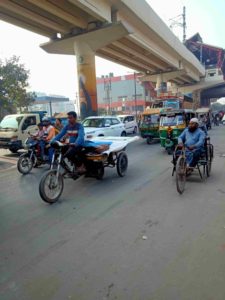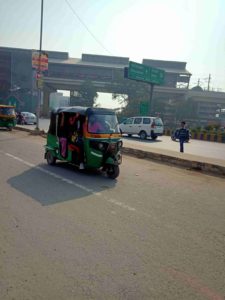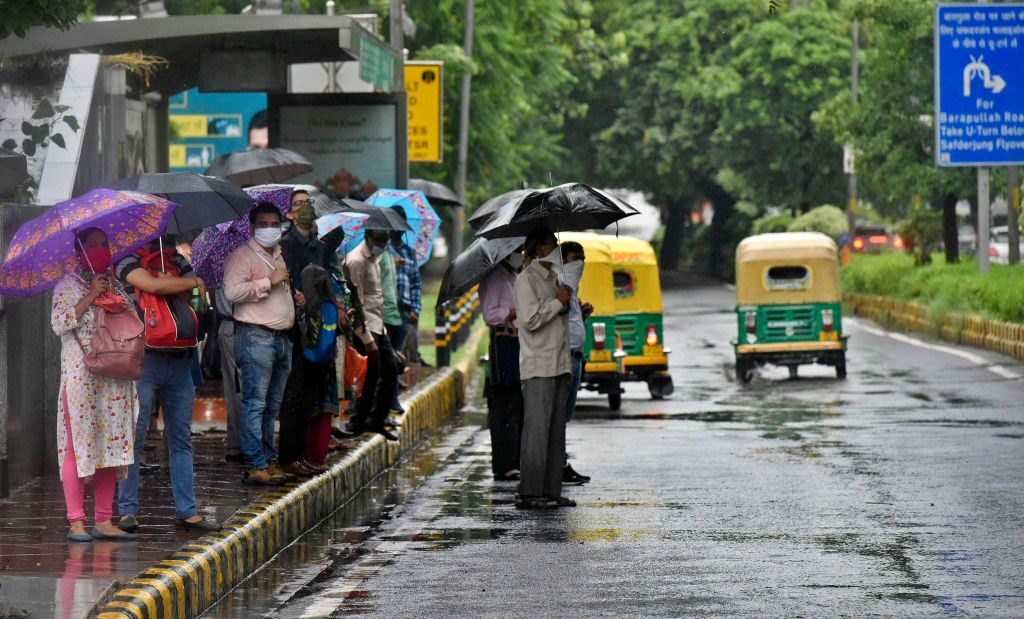For workers residing in different cities of NCR, commuting to Delhi can be an uphill task made worse by the added burden of waiting for metro-feeder buses and suburban trains to restart operations
Delhi, a city known for its harsh winters and even harsher summers is not an easy place to work, especially for people who have to cover large distances as part of their daily commute to their workplaces, as many who work within the city do not live here.
Long queues waiting for Tempos, auto-rickshaws and e-rickshaws that flock the sides of the roads are a common sight in many of the cities adjoining Delhi, that come under the purview of NCR.
For commuters looking to cover larger distances, they form an essential link of their daily commute while for some auto-rickshaws are the only option. Packed with as many as ten passengers in a six-seater tempo even during the pandemic, these rickshaws although indispensable for many, are a potential health and safety hazard. A scene replicated all over NCR.
“Whenever I had to travel to Delhi from Noida, I took DTC bus number 392 from here, which is now not plying on this route. So, the only choice left is travelling via the metro. Because I can’t afford an auto-rickshaw.” says Rakesh, a painter from Bihar who resides in Noida.
The monopoly of three-wheeler auto-rickshaw, e- rickshaw, and four-wheelers is palpable here in Noida, more so in Ghaziabad. They cover a set route to a set destination. And going beyond those distances requires boarding another rickshaw or using a private vehicle.
Because commuting here is costly, it becomes a big burden on labourers working in Delhi-NCR, “I earn Rs 400- 500 a day out of which I have to spend Rs 60 on commuting. After factoring in the cost of food and other expenses, I am left with just Rs 100. Also, I can’t work on all 7 days.” says Sandeep Mehto, as he waits near the Shaheed Sthal Metro station.

In Ghaziabad, residents are demanding the resumption of DTC bus services as without them they are left with little option. DTC bus services were earlier available at Indirapuram, Kaushambi and Vaishali, but later suspended for reasons known to DTC. While Kaushambi and Vaishali have metro stations, people going towards Indirapuram, Khoda and other areas of Ghaziabad have to take auto and e-rickshaws.
In Gurugram, another NCR city — significant improvements in public transport have been made in the last few years. The city has its own bus service that even connects it with Delhi and the Rapid metro has made commutes a lot easier. Even here, despite not having a monopoly on short and long-distance commutes, auto-rickshaws do not travel by meter, a common complaint amongst the residents. They charge their own rates and often refuse services if commuters try to haggle.
“I am 65 years old, and I can not use buses due to my age and these auto-rickshaws charge hefty amounts,” says Pinky Kishore, a resident of Gurugram. Overcharging is a common complaint coupled with the refusal to use meters that reverberates across the cities of NCR.
Impact of Covid
Due to the pandemic, commuting has become even more cumbersome and the increase in fares have done nothing to make it any easier. Metro feeder bus services have been stopped and the impact of allowing DTC to function at half its seating capacity is that more and more people are being forced to rely on their private vehicles.
DMRC currently has 174 feeder buses, operated by private concessionaires, and officials told us they are planning to start 100 more buses on 10 routes. Metro feeder buses help share the burden of DTC, especially during peak hours at busy routes like Azadpur, Dwarka, and Katwaria Sarai.
Local suburban trains, operated by northern railways for NCR are yet to resume services since they shut down during the Covid lockdown. They form a significant link in commuting for the lower-income working class connecting different regions of NCR, otherwise not connected by the metro. People coming from Palwal, Faridabad, Ghaziabad districts mostly coming to Delhi for work on a regular basis depending on these trains.
We met Raghuvir, who is an electrician in Faridabad and runs a small shop there. He visits Delhi every week and finds these suburban trains the most important link connecting Delhi-NCR. Now since these trains are not in operation, many have had to reduce the frequency of their visits to Delhi, “I am a regular visitor of Delhi, but since these trains have stopped, I have been travelling by motorbike.” He said.

For Raghuvir, commuting within Delhi city is a lot easier than in Faridabad, where for a small distance, you have to hail an auto or a tempo. While in Delhi, the metro connects every major corner of the city, DTC buses fill the gaps. Similar responses were received from residents of Ghaziabad.
Commuting in Delhi
As per the Regional Plan 2021 for the National Capital Region, compared to Indian average, the total number of vehicles per 100,000 residents are five times higher in Delhi and three times higher in the NCR. Also, road density is high in Delhi, 1.5 times higher at national highways and 2.5 times higher at state highways.
Therefore, in terms of time, travel through roads is higher too. A research paper published last year studied the spatial patterns of commuting studies commuting patterns within three classified categories — short commutes to work (0–1 and 2–5 km), intermediate trips (6–10, 11–20 and 21–30 km) and long trips (31 to more than 50 km).
It found that intermediate trips from NCR towns — like Faridabad, Gurugram, Gautam Budh Nagar which are well connected with Delhi through metro and buses, form a significant intermediate trip resulting in traffic congestion both on-road and also causing crowds in metro and buses.
Interestingly, for short trips for work in urban areas of NCR where big international offices are located, four-wheelers are a popular choice resulting in traffic congestion. While in rural areas a large chunk of the private mode of transport consists of two-wheelers many are forced to make intermediate or long trips due to lack of employment opportunities within their region.





